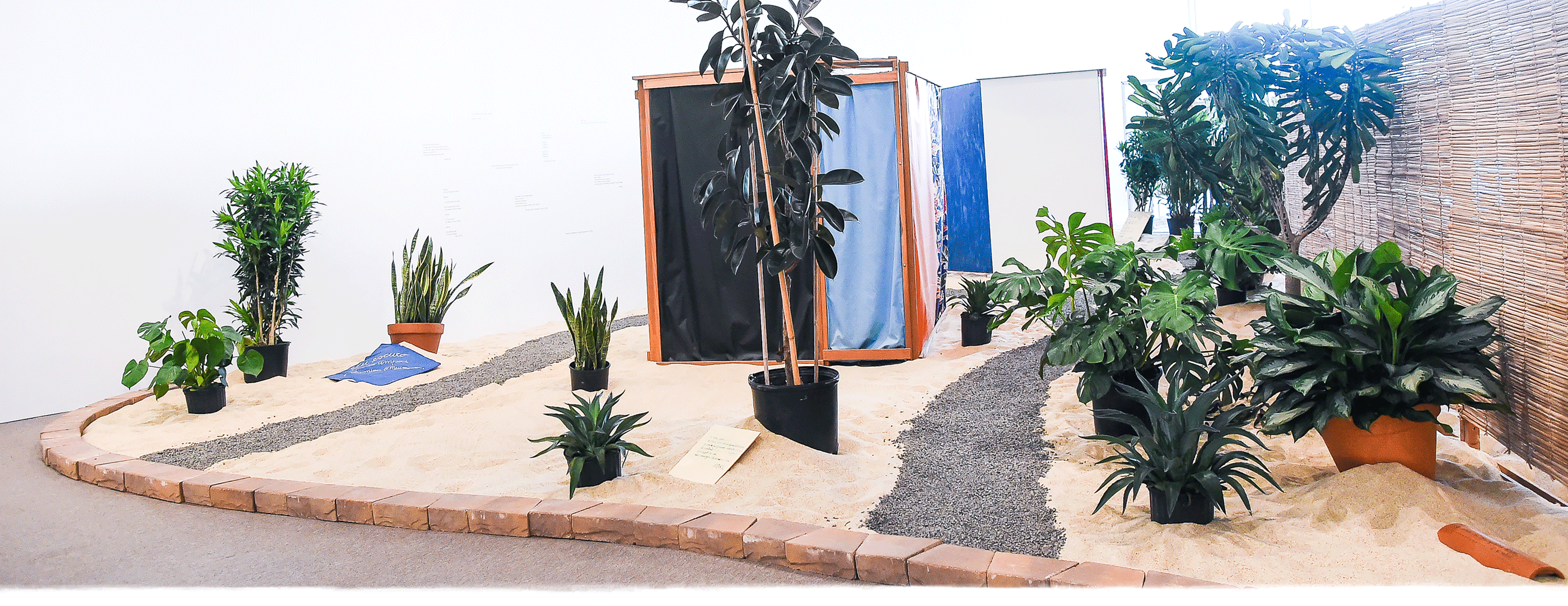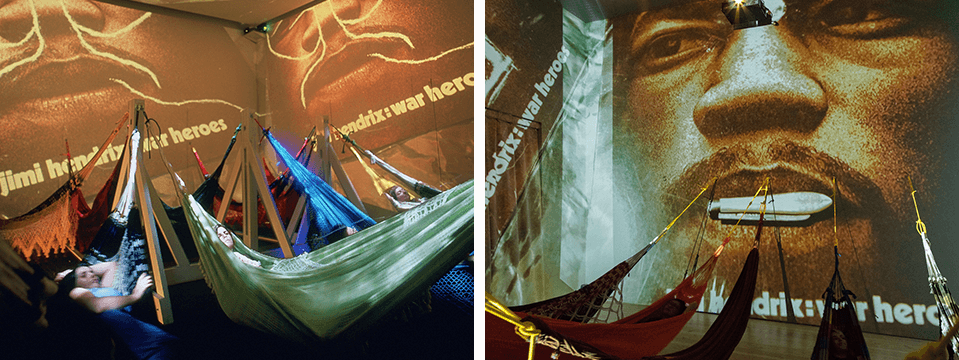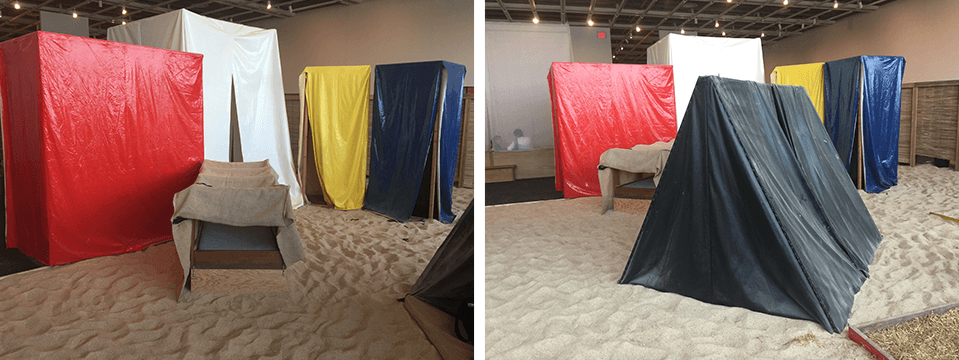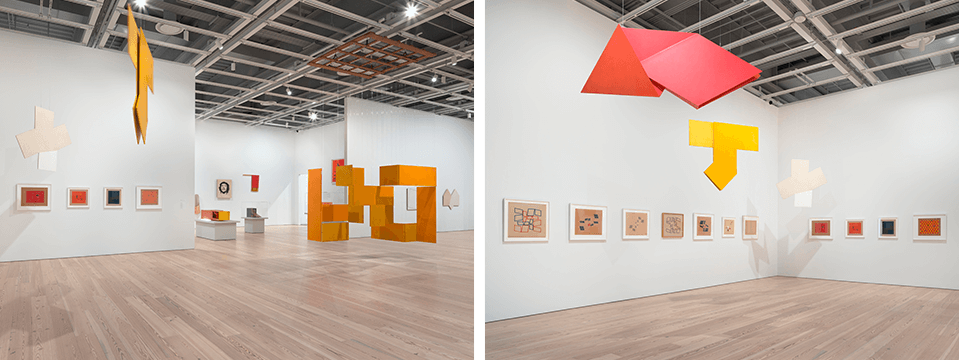
culture
Art For Your Body
In the first comprehensive retrospective of Hélio Oiticica in the United States, the Whitney Museum has become a place where visitors/participants can enjoy the immersive work of one of Brazil’s most recognized artists.
Relax
Arriving on the 5th floor of the Whitney to view “Hélio Oiticica: To Organize Delirium”, you realize right away that this is not your average museum show. Entering the room for the installation “CC5 Hendrix-War” (from 1973), viewers – or participants as he preferred to call them – are welcomed to lay down in hammocks while listening to Jimi Hendrix. Projected on the walls are different shots of the cover of “War Heroes”, a posthumous album by the iconic guitarist. It is easy to forget about life outside the hammock as you swing from side to side and dive into Jimi’s fuzzed out guitar and trippy lyrics. Hélio believed the artist was a “propositioner” of practices – he tried to create situations for the viewer to experience. He made art that went beyond the walls.

Paradise
Even more unexpected is Eden, a massively large installation in which a huge portion of the 5th floor is completely covered in sand. You’re asked to place your shoes in grade school cubbies, and then allowed to stroll the sand paths. Along the way you encounter an incredible variety of experiences, including colorful tents (in Mondrian colors, red, blue, yellow, black and white) where you can climb inside and listen to music, a pit of foam rubber cubes to roll around in, a shallow pool of water to splash your feet in, a similar “pool” of hay for a completely different tactile sensation for your feet, as well as pebbles, and a pile of books. There’s a special stop to try on the artsy garments Hélio created, known as Parangolés.

Parangolé
Made of fabric, potato sack or plastic, the Parangolés are supposed to be carried or worn like capes by the participant, who can then, in Hélio’s ideal vision, dance samba. More than worn, it should be “incorporated” – viewer and artwork happening at the same time. The first time he showed this work at the Museum of Modern Art in Rio de Janeiro, back in 1965, it caused controversy. The samba dancers Oiticica brought from the favelas of Mangueira (slums he frequented in Rio) were banned from entering the museum. As a plan B, the group did their happening outdoors and it became one of the most legendary moments in Brazilian art.
Painting the space
In addition to the interactive installations, we also get to see more traditional two-dimensional works from the beginning of his career, including some beautiful geometric paintings in warm colors – inspired by Constructivist European painters in the style of Mondrian and Malevich. By tracing his complete evolution as an artist, we can literally see the moment when he transforms the works hanging on walls into 3 dimensions. The same beautiful geometrical colorful forms take flight as sculptures hanging from the ceiling.

NYC
Hélio Oiticica lived in New York from 1970 – 1978, and made enough work during that period to justify this show at the Whitney, a museum that focuses on American art. He died shortly after returning to Brazil, in 1980, at age 42. Despite the short life, Oiticica (pronounced oy-tee-see-kah) was revolutionary. One of his most celebrated installations is Tropicália (also recreated in the Whitney exhibition), a garden filled with potted plants, caged birds, sand, signs with poems and a precarious room where an old TV makes weird noises. It is from this work, completed in 1967, that Caetano Veloso and Gilberto Gil took the name for their iconic counterculture musical movement Tropicalismo.
Legacy
He was also one of the key members in the foundation of the Neo-Concrete Movement in 1959 – which suggested art should prioritize participation, the body and the integration of art into the everyday. Oiticica is a seminal figure in Brazilian art and culture and a fascinating character. His grandfather was a philologist and published an anarchist newspaper. His father was an experimental photographer and a scientist focused on butterflies. He read modern philosophy and especially loved Nietzsche. It was Nietzsche who believed that invention was the condition of the tragic artist. Hélio Oiticica said about his works: “I don’t know what they are. If it is an invention, I can’t know what it is. Otherwise, it wouldn’t be an invention”.
Enjoy Hélio Oiticica: To Organize Delirium at the Whitney Museum of American Art in New York, from July 14th to October 1st 2017.
